The Iron Myth: Can Vegans Really Get Enough Iron From Plant-Based Foods?
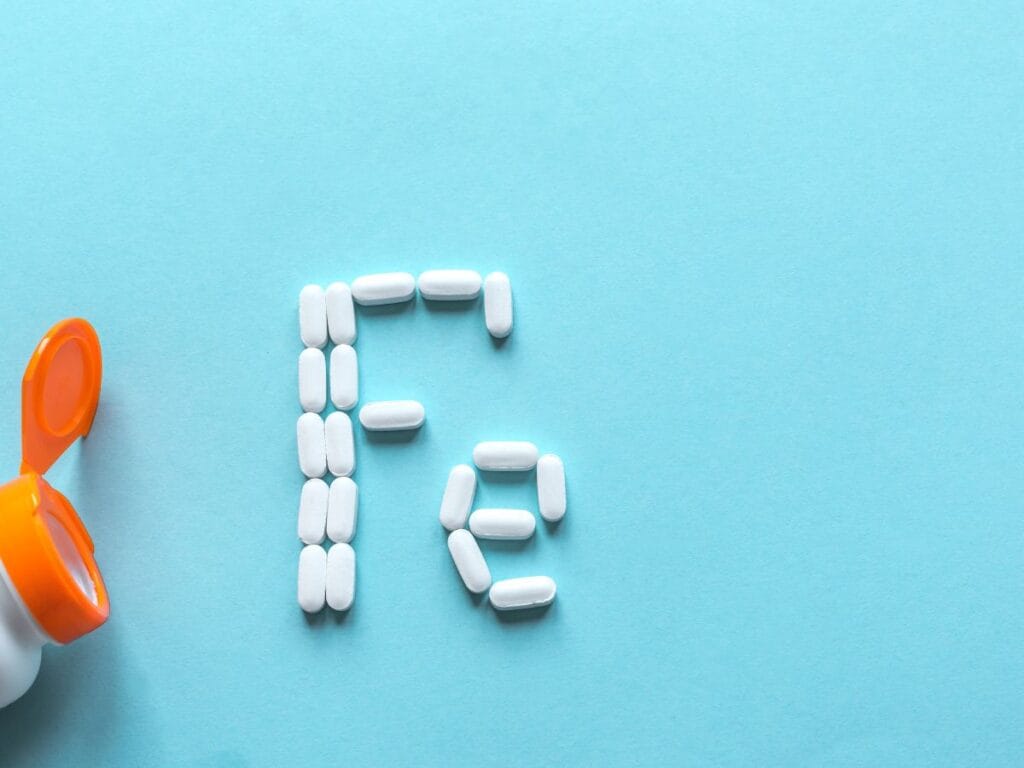
If you’re vegan, you’ve probably heard the question: “But what about iron?” Fortunately, getting enough iron from plant-based foods is totally doable. However, you just need to know where to find it — and more importantly, how to help your body absorb it.
In this post, we’ll break down the best vegan iron sources and simple ways to boost absorption. Rather than hype or guesswork, you’ll get clear info to support your plant-based lifestyle
How Much Iron Do You Actually Need?
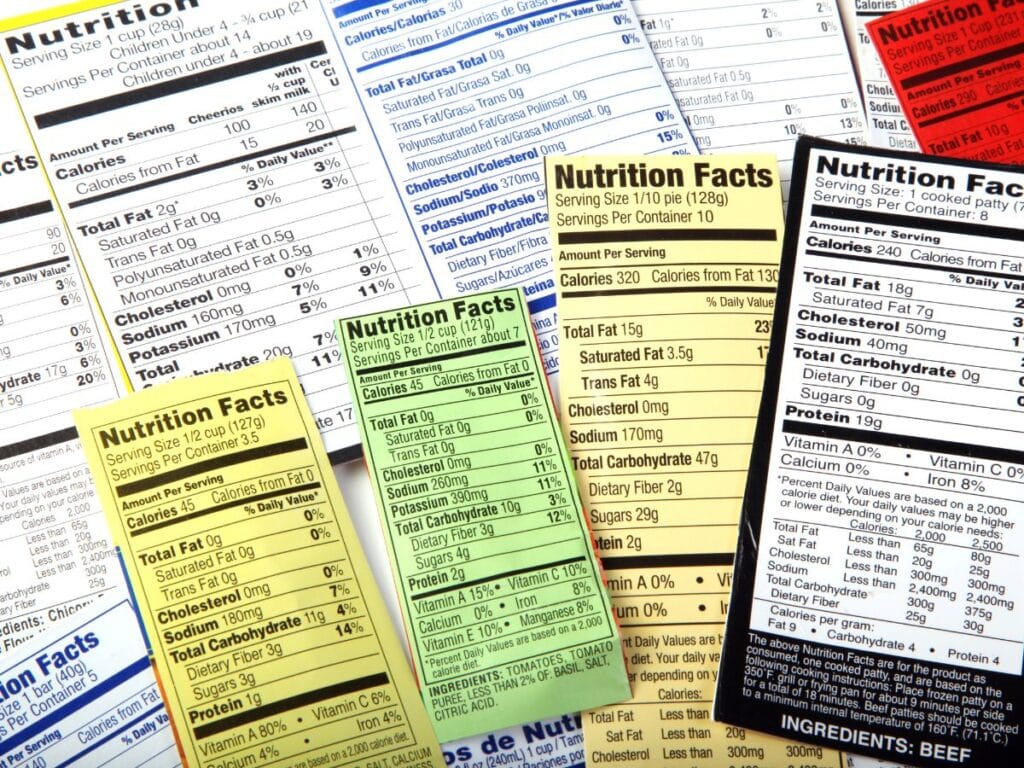
How Much Iron From Plant-Based Foods Do You Actually Need?
Let’s start with the basics: Most adult men and postmenopausal women need 8 mg of iron per day, while premenopausal women need about 18 mg.
However, if you’re vegan, your target should be higher. Since non-heme iron from plant-based foods isn’t absorbed as efficiently, experts recommend multiplying your daily target by 1.8.
Therefore, here’s what you need:
- Vegan men and postmenopausal women need around 14 mg/day
- Vegan premenopausal women need up to 32 mg/day
What does that look like in food? To hit around 32 mg, you could eat:
- 1 cup cooked lentils (6.6 mg)
- 1 cup cooked spinach (2.7 mg)
- 1 cup cooked quinoa (2.8 mg)
- 1 ounce pumpkin seeds (2.5 mg)
- A serving of iron-fortified cereal (up to 18 mg per label)
- A square or two of dark chocolate (3.4 mg per ounce, bonus!)
Clearly, it’s totally doable when you mix and match plant-based foods with intention — no supplements or spinach overload required.
Why Iron From Plant-Based Foods Matters for Your Health

Iron plays a key role in moving oxygen through your blood, keeping your energy steady and your brain sharp. Nevertheless, here’s the catch: non-heme iron (the kind found in plants) isn’t absorbed as easily as the heme iron in meat. Consequently, vegans need to pair the right foods and be a bit more intentional—nothing drastic.
Why Non-Heme Iron Is a Safer Choice for Your Health
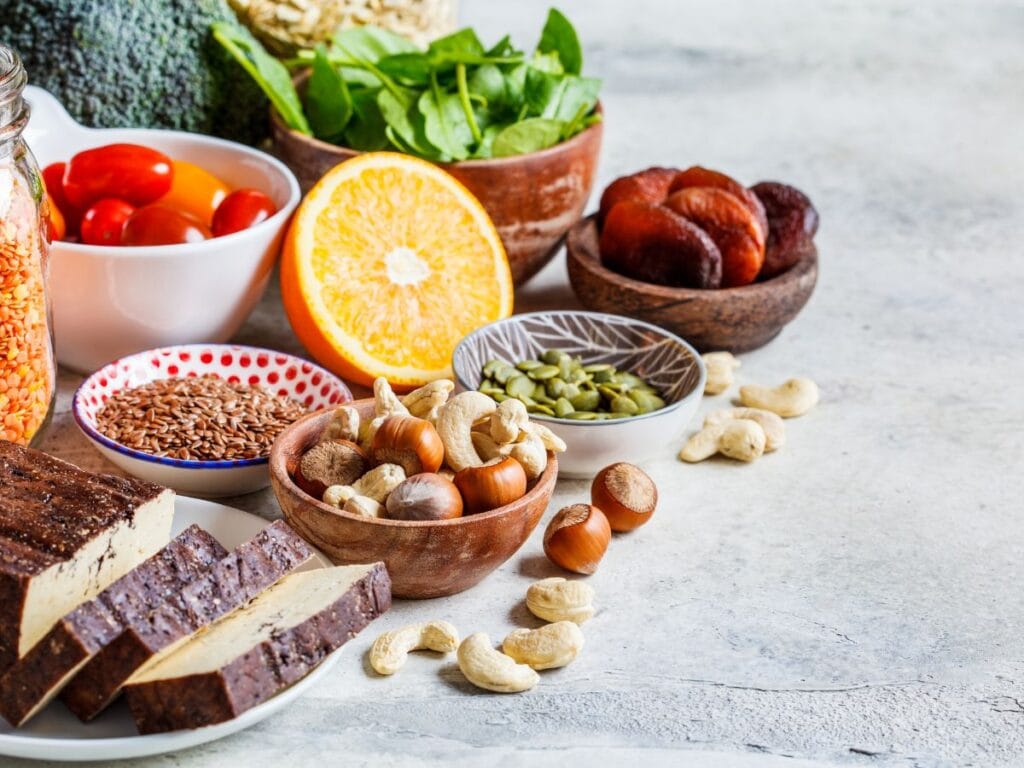
There’s a silver lining to getting iron from plant-based foods. Non-heme iron may actually be better for long-term health compared to heme iron. Unlike heme iron, it doesn’t get absorbed in large, unregulated amounts. As a result, this can help reduce the risk of iron overload, which has been linked to heart disease and other chronic conditions.
Furthermore, plant-based iron foods often come with fiber, antioxidants, and anti-inflammatory compounds—benefits that meat simply can’t offer.
Nature’s Iron Powerhouses: Top Sources of Iron From Plant-Based Foods
1. Legumes: The Foundation of Plant-Based Iron

Beans, lentils, and chickpeas provide a powerful combination of protein and iron, making them nutritional cornerstones in a vegan diet:
- Lentils (6.6 mg per cup, cooked) – These versatile legumes can transform soups, salads, and grain bowls while delivering nearly half of your daily iron needs. Moreover, they’re incredibly affordable and shelf-stable.
- Chickpeas (4.7 mg per cup, cooked) – Beyond delicious hummus, chickpeas shine in curries, roasted as snacks, or blended into plant-based meatballs. Additionally, they provide substantial fiber and protein.
- Black Beans (3.6 mg per cup, cooked) – A staple in many cuisines, these beans provide substantial iron alongside magnesium and potassium. Similarly, they’re perfect for meal prep and freeze beautifully.
- Soybeans (8.8 mg per cup, cooked) – Often overlooked, whole soybeans offer one of the highest iron contents among legumes. Surprisingly, they contain more iron than many people realize.
2. Dark Leafy Greens (More Than Just Calcium)
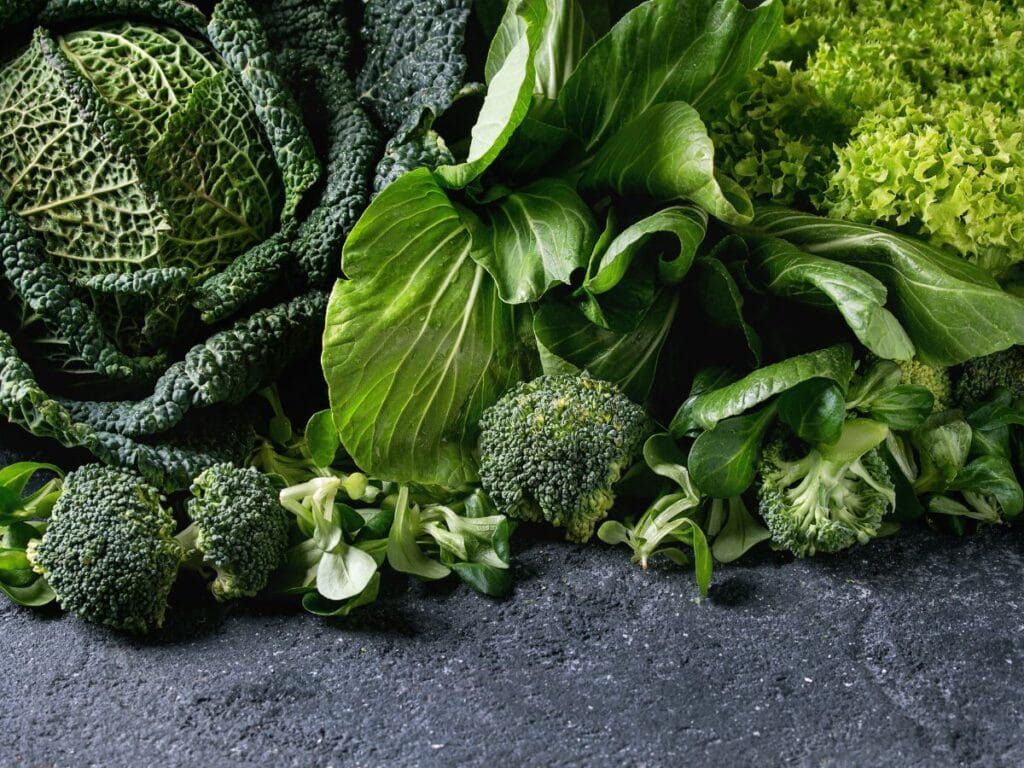
While leafy greens vary in iron bioavailability, they remain important sources in a balanced vegan diet:
- Spinach (6.4 mg per cup, cooked) – Though high in iron, spinach contains oxalates that can reduce absorption. However, pairing with vitamin C foods effectively mitigates this effect.
- Kale (1.1 mg per cup, cooked) – Lower in iron but more bioavailable than spinach and packed with vitamins A, C, and K. In addition, it’s incredibly versatile in both raw and cooked preparations.
- Swiss Chard (4 mg per cup, cooked) – This colorful green provides substantial iron with less oxalate content than spinach. Furthermore, its rainbow stems add beautiful color to any dish.
- Collard Greens (2.2 mg per cup, cooked) – A nutritional powerhouse that delivers iron alongside calcium and fiber. Notably, they’re particularly popular in Southern cuisine.
3. Soy Products: Versatile Iron-Rich Staples
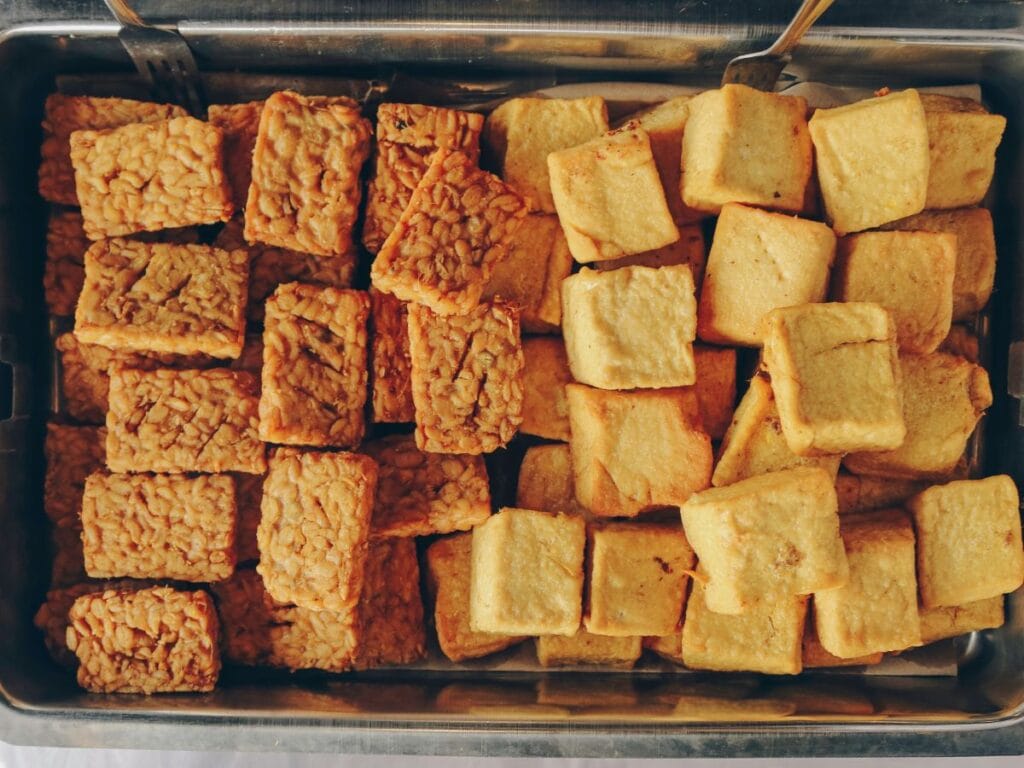
Fermented and traditional soy foods offer readily available iron:
- Tofu (3.4 mg per 100g) – This chameleon of plant-based cooking absorbs flavors beautifully while providing significant iron. Meanwhile, it’s an excellent protein source that works in countless recipes.
- Tempeh (2.7 mg per 100g) – The fermentation process improves iron absorption, giving tempeh an edge over many soy products. Additionally, it provides probiotics and a nutty flavor.
- Natto (3.6 mg per 100g) – This traditional Japanese fermented soybean dish is particularly high in bioavailable iron and vitamin K2. Although it has a strong flavor, it’s incredibly nutritious.
4. Nuts and Seeds: Concentrated Iron From Plant-Based Foods
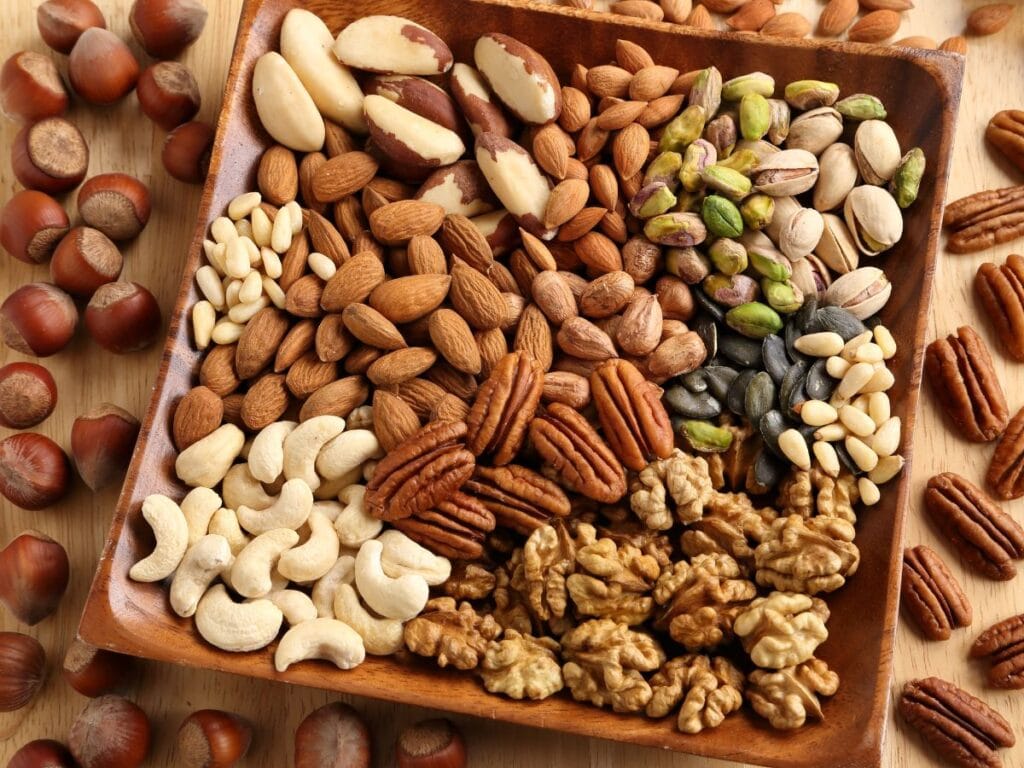
- Pumpkin Seeds (4.2 mg per ¼ cup) – These green powerhouses, also called pepitas, offer one of the highest seed-based iron sources. Furthermore, they make a perfect crunchy salad topping.
- Hemp Seeds (2.4 mg per 2 tbsp) – Beyond iron, they provide complete protein and essential fatty acids. Likewise, they have a mild, nutty flavor that works in smoothies and yogurt.
- Cashews (1.9 mg per ¼ cup) – Creamy and versatile, cashews contribute iron while serving as a base for many vegan cheeses and sauces. Similarly, they’re delicious eaten raw as a snack.
- Sesame Seeds (1.3 mg per tablespoon) – Tahini, made from sesame seeds, is an iron-rich addition to dressings and sauces. Additionally, whole sesame seeds add wonderful texture to baked goods.
5. Whole Grains: Sustained Energy with Iron Benefits
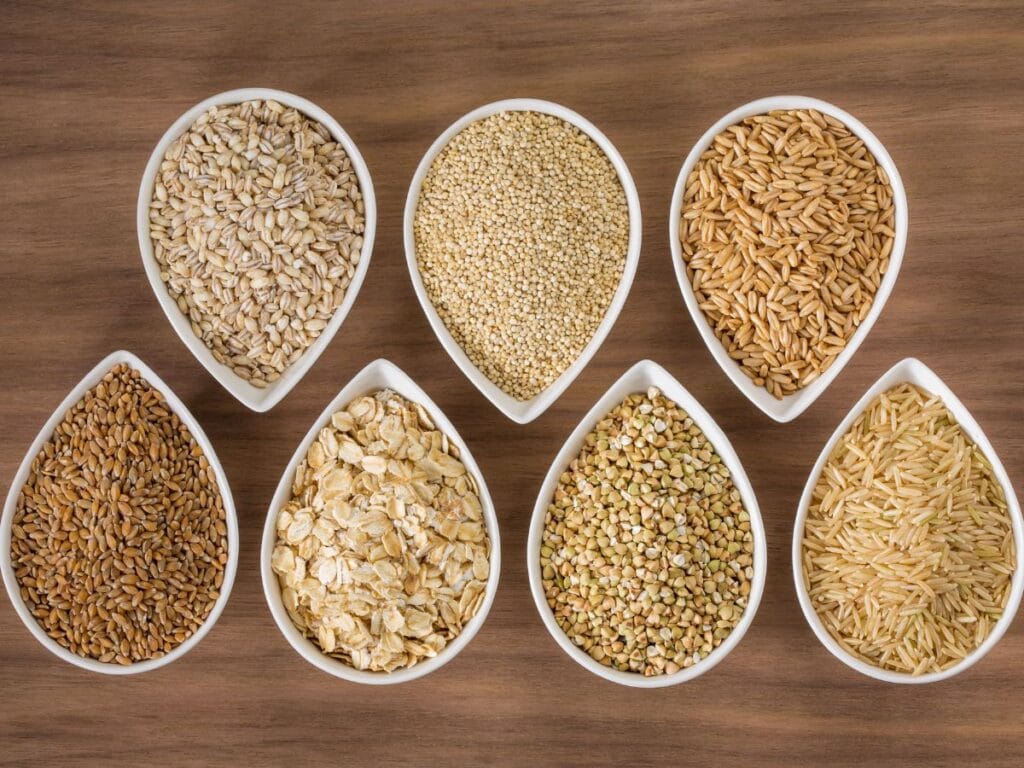
- Quinoa (2.8 mg per cup, cooked) – A complete protein and excellent iron source that works in both sweet and savory dishes.
- Oats (3.4 mg per cup, cooked) – Ideal for a hearty breakfast that provides sustained energy throughout the morning.
- Brown Rice (0.8 mg per cup, cooked) – Not as high in iron but still a good source when eaten regularly as part of balanced meals.
6. Dried Fruits: Sweet Sources of Iron From Plant-Based Foods
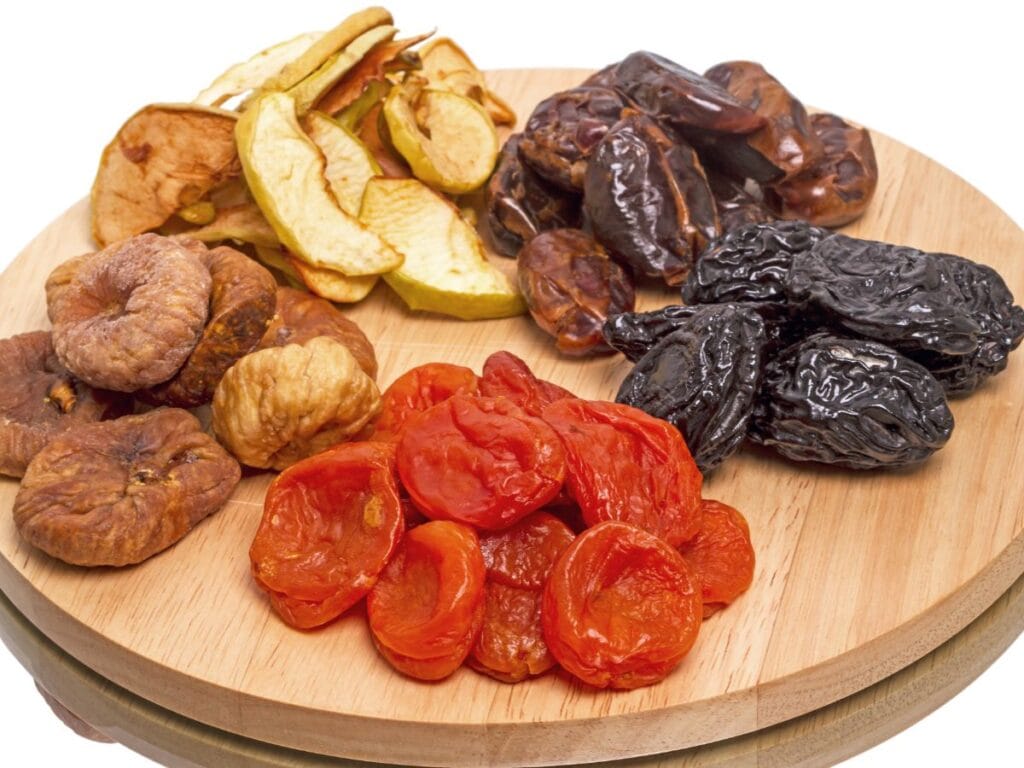
- Apricots (3.5 mg per ½ cup) – A naturally sweet iron boost that’s perfect for snacking or adding to trail mix.
- Raisins (1.6 mg per ½ cup) – Easy to add to oatmeal or trail mix, plus they provide natural sweetness to dishes.
- Prunes (0.9 mg per ½ cup) – Also great for digestion while contributing to your daily iron intake!
7. Unexpected Contributors of Iron From Plant-Based Foods
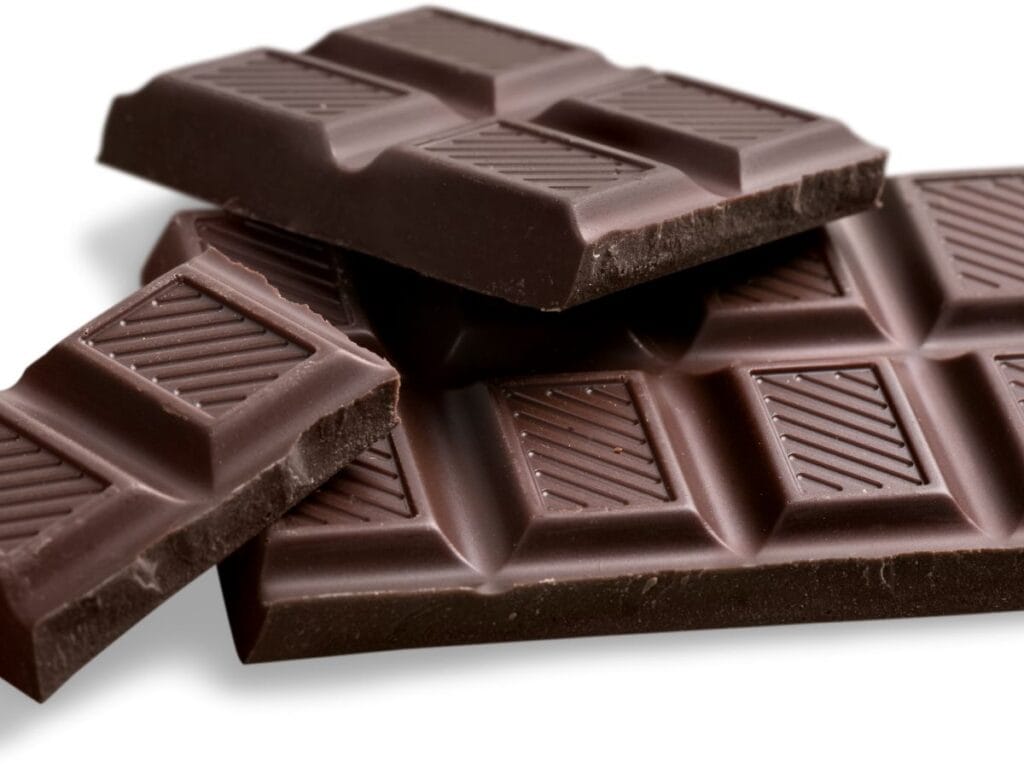
Several surprising plant foods contain notable amounts of iron:
- Blackstrap Molasses (3.6 mg per tablespoon) – This byproduct of sugar refining is concentrated with minerals and adds rich flavor to baked goods. It also words as a great sweetener for baking and dressings.
- Dark Chocolate (3.4 mg per ounce, 70%+ cacao) – Indulge in this treat knowing you’re getting iron alongside antioxidants. What’s more, it satisfies sweet cravings healthily.
- Tomato Paste (1.4 mg per ¼ cup) – Concentrated tomatoes provide iron plus vitamin C for enhanced absorption. Additionally, they add umami depth to sauces and stews.
- Spirulina (2 mg per tablespoon) – This blue-green algae is among the most nutrient-dense foods on the planet. However, start with small amounts due to its intense flavor.
How to Boost Absorption of Iron From Plant-Based Foods
Eating iron-rich foods is just the first step. More importantly, you also need to make sure your body can effectively use that iron.
Vitamin C: The Ultimate Helper for Iron From Plant-Based Foods

Adding vitamin C to meals can boost iron absorption up to 300%. Try these easy combos:
- Add strawberries to your breakfast cereal
- Squeeze lemon on lentil soup or bean salads
- Mix bell peppers into tofu stir-fries
- Top spinach salad with orange slices
Watch Your Timing When Eating Iron From Plant-Based Foods
Some foods and drinks can block iron absorption:
- Space out coffee and tea – Their tannins can cut iron absorption by 60%. Wait an hour before or after iron-rich meals.
- Time your calcium intake – Calcium competes with iron. Try to separate calcium supplements from iron-rich meals.
- Handle high-phytate foods wisely – Whole grains and beans contain phytates that bind to iron. Proper cooking helps reduce this effect.
Cooking Tips for Maximizing Iron From Plant-Based Foods
How you cook can affect how much iron you get:
- Use cast-iron pans – Acidic foods like tomato sauce can pull iron from the pan, increasing iron content up to 10 times. As a result, your meals become more iron-rich naturally.
- Soak, sprout, and ferment – These methods reduce phytates in grains and beans, helping your body absorb more iron. Additionally, these techniques often improve digestibility.
- Chop garlic and onions – Cutting these foods releases compounds that help with iron absorption. Furthermore, they add incredible flavor to any dish.
- Lightly cook some veggies – Cooking can break down cell walls and release more nutrients. However, avoid overcooking to preserve other vitamins.
Easy Iron-Rich Meal Ideas
Lentil and Spinach Curry
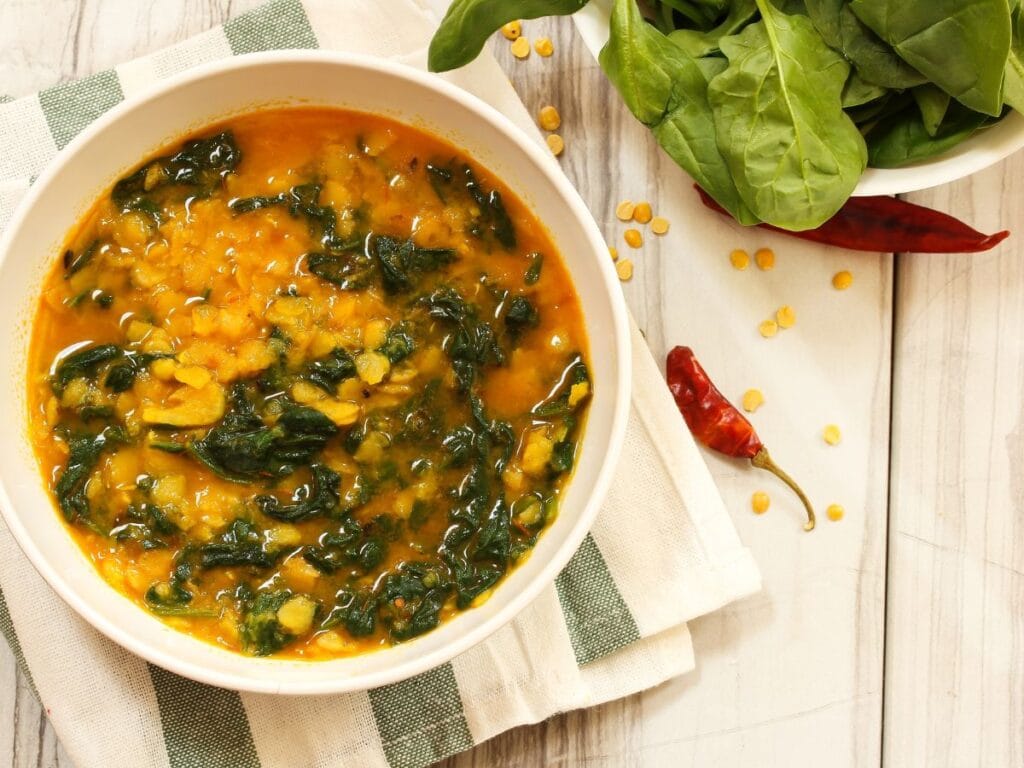
Whip up this cozy dish with 1 cup of lentils (6.6 mg iron), 2 cups of spinach (5.4 mg), and a tomato base spiked with vitamin C. Simmer it with spices like turmeric and cumin for flavor. Estimated iron: ~12 mg per serving (2 servings total). Pair it with brown rice, and you’ve got a winner.
Quinoa-Stuffed Bell Peppers
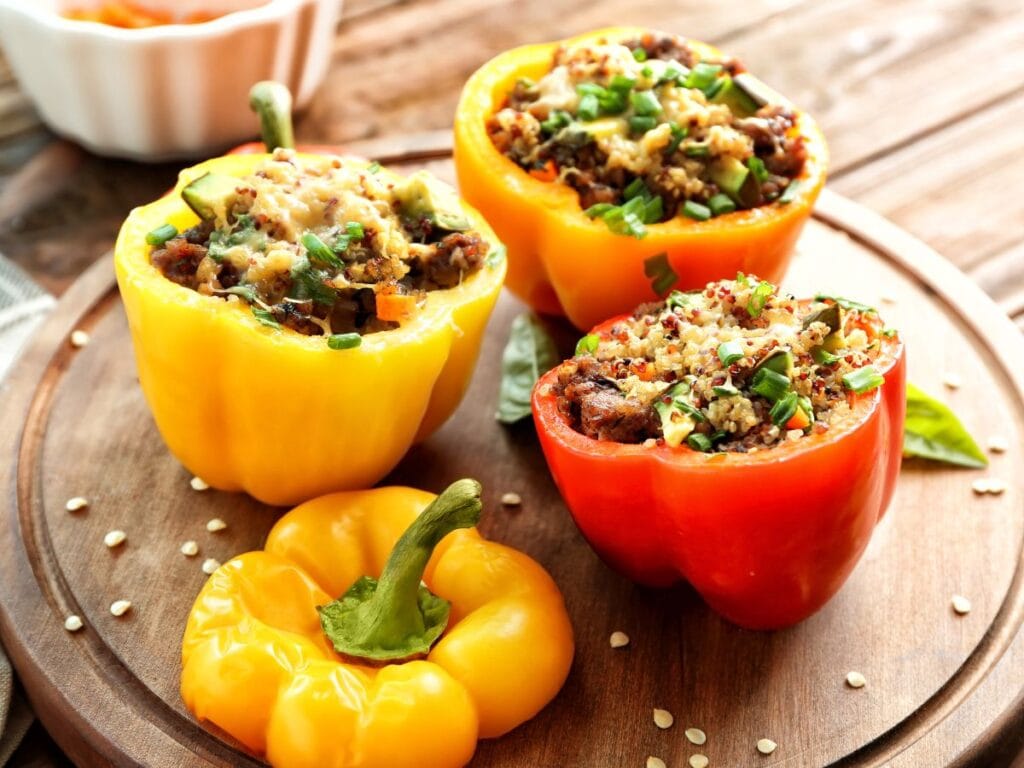
Stuff bell peppers with 1 cup of cooked quinoa (2.8 mg), black beans (1.8 mg per half cup), and a handful of spinach (1 mg). Bake until tender. Estimated iron: ~5.6 mg per serving (2 servings). The peppers add vitamin C, making this a double win.
Almond Butter on Whole Wheat Toast or Apple Slices

Almond butter contains about 1.1 mg of iron per tablespoon, making it a tasty and nutritious way to boost your iron intake. Moreover, when paired with vitamin C-rich apple slices, it becomes an even more effective iron-boosting snack.
You Can Thrive Getting Iron From Plant-Based Foods Without Supplements
With smart food choices and cooking methods, vegans can maintain healthy iron levels without supplements. Instead, mix iron-rich plant foods into daily meals and use absorption-boosting tricks for better energy and health—no animal products needed.
Most importantly, consistency matters more than perfection. Build meals around beans, grains, nuts, seeds, and greens. Then, add vitamin C sources to create iron-friendly meals that support long-term health.
Now you can enjoy your lentil soup or tofu stir-fry with complete confidence, knowing you’re getting plenty of iron from plant-based foods!

